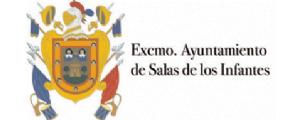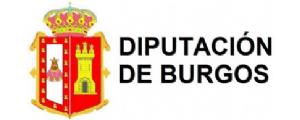‘Iniestapodus burgensis’: Burgos dinosaur footprints named after soccer star
- The new tracks have been found in the Sierra de la Demanda and the discoverers have named them in honor of the Fuentealbilla player
- The dinosaur that left them was a quadruped, herbivorous sauropod with a long tail and neck
- It is a unique find in the world and dates from the beginning of the Cretaceous, 144 million years ago
Some new fossil dinosaur footprints, unique on the planet so far and found in the Sierra de la Demanda, in the province of Burgos, they have been baptized with the name of Iniestapodus burgensis, What does it mean ‘Pie de Iniesta Burgos’, in tribute to Andrés Iniesta, a soccer player known worldwide for, among many other achievements in his record, having scored the goal that gave Spain the soccer world championship in 2010.
It is a new type of fossil footprints (ichnites) attributed to a sauropod dinosaur (quadruped, herbivore, long tail and neck), located in Quintanilla de las Viñas (Burgos), in early Cretaceous sediments (Mesozoic Era), 144 million years ago.
“Traces indicate, as in the case of the La Mancha footballer, firm, elegant, graceful, well-marked steps of a dinosaur of a peaceful character, enduring over time, with good ground“, as stated in the statement of the Salas Archaeological and Palentological Team in which it is added that” in the same way that the footprints of the dinosaurs of Burgos have lasted millions of years, the talent and success of Andrés Iniesta make up a a fundamental part of the history of the Spanish national team and world football “.
‘Iniestapodus burgensis’: Burgos dinosaur footprints named after a soccer star
Iniestapodus ichnites are located in three rocky outcrops that are part of Las Sereas, a megafield with more than 1,000 footprints, extended about 5.6 km in length between Cubillejo de Lara and Mambrillas de Lara; in that space they have been identified so far 14 outcrops with dinosaur fossil footprints, but many others may be hidden by land and vegetation.The research work has been carried out by a team headed by Fidel Torcida Fernández-Baldor (Dinosaur Museum of Salas de los Infantes, Burgos) and in which Ignacio Díaz Martínez (CONICET- Universidad Nacional de Río Negro, Argentina) participate. , Pedro Huerta Hurtado (University of Salamanca, Salas Archaeological and Paleontological Collective), Diego Montero Huerta (Salas Archaeological and Paleontological Collective) and Diego Castanera (Institut Català de Paleontologia Miquel Crusafont).The work has been published in Scientific Reports of the Nature Research group, a journal of international prestige, with a high degree of impact in the set of specialized publications in Science.
A site ready to be visited
The reservoir The Sereas 7, very close to Quintanilla de las Viñas, it is prepared for your visit and protected, although it requires the renewal of the information panels due to this new study; the rest of outcrops with Iniestapodus tracks are not protected from destructive environmental factors.Traces of different sizes have been documented, both from adult and juvenile individuals; Although there are traces that intersect and are concentrated at a certain point in the deposits, there is no evidence that they were together, that is, they would be solitary individuals, not gregrados.
The new ichnospecies has a unique combination of anatomical characters: a semicircular hand with a mark of three anterior fingers, and finger I (which would correspond to the thumb) leaves a small mark on the back; the foot has marks of four claws (the normal thing is that there are three), with two fingers directed forward and another two laterally; moreover, finger I is shorter and is located in a posterior position in relation to the rest.
This new study reinforces Castilla y León as a paleontological focus of international interest, specifically in the Sierra de la Demanda (Burgos), thanks to the discovery of an unknown ichnospecies of dinosaur, unprecedented in the rest of the planet.
It is one more element of a heritage in dinosaurs that has so far several unique features, with direct remains of about 150 sites of dinosaurs and other species, from which unique specimens come.
In addition, a series of previous studies on fossils from the Salas de los Infantes Dinosaur Museum suggests that new species will be described in the near future.
« Andrés Iniesta passes into ete ... in Burgos Enigmatic tracks of solitary s ... in Iberia »







